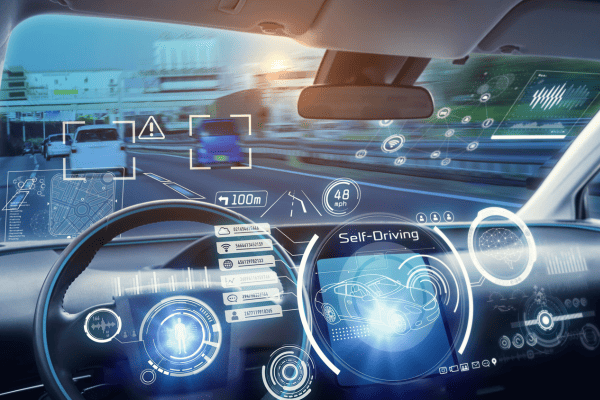Written by Jonny Steiner
Artificial Intelligence and Machine Learning have officially passed “the come up” and have hit the mainstream. It is a meteoric rise that mimics the rise of recording artists like The Kid Laroi, who, up until 2020, was relatively unknown outside his native Australia. However, after a string of hits and collaborations with popular and established artists, he quickly moved up the charts, leading to his 2022 Grammy Award for Best New Artist.
Similarly, some AI and ML hits drive the market forward as they are employed in automated continuous testing, making significant impacts. The “hits,” as it were, include AI-powered test creation, self-healing, and predictive risk assessment, all of which we will get into in this article.
There is a verse by Eric B and Rakim from their 1992 classic track, “Don’t Sweat the Technique,” that can illustrate the proliferation of new technologies and their effect on industries:
“Scientists try to solve the context /
Philosophers are wondering what’s next.”
In the context of automated continuous testing, developers and engineers are actively developing and applying AI and ML to help address the continuous testing challenges that have persisted for many years. Their focus is to optimize existing testing processes by using technology that alleviates their current challenges.
Simultaneously, thought leaders and subject matter experts are considering the broader implications of AI and ML as they pertain to the future of web and mobile software testing. Their concern is how these technologies shape and transform the testing landscape and overall processes.
Both perspectives are necessary to keep AI and ML in continuous testing growing at a rapid pace. We need the scientific problem-solving approach to refine these techniques. At the same time, embracing a futuristic, forward-thinking mindset will help explore the potential of AI and ML techniques.
The Numbers Do Not Lie
The use of AI and ML in automated continuous testing is rising consistently. Organizations continue to be driven by demands for faster, more efficient, and scalable testing methods and processes. A study by Gartner¹ in 2022 says that 48% of organizations already use AI and ML in their testing, with that number expected to grow to 64% by 2025.
That is on the organizational level, but on the more practical usage level, Capgemini² reported in 2023 that these techniques are reducing testing times by 50% with a 40% reduction in defect escape rates and a 30% increase in test coverage.
So, let’s explore these aspects of AI and ML capabilities as they impact the software testing process. Remember:
“My ideas are only for the audience’s ears /
For my opponents, it might take years.”
The Ghost is the Machine
Several automated continuous testing capabilities implement AI and ML techniques to increase efficiency and visibility. The goal is to reduce the manual work that takes a lot of time and to break down silos between teams.
AI-Powered Test Creation – Using Natural Language Processing techniques, this capability automatically generates test cases. At the same time, the capability can be fed requirements, stories, existing test cases, and code coverage data to generate stronger and more reliable tests using machine learning algorithms.
The benefits of AI-Powered Test Creation include:
- Generated test cases that cover more scenarios than a manual tester can achieve, increasing test coverage.
- Tests are generated much faster than manual methods, significantly reducing time and effort.
- Improved test quality as cases become more comprehensive and less error-prone.
AI-Powered Self-Healing – Automatically detects and heals failed tests during test executions using Classification Techniques. The capability compares actual results to expected ones, and when the results don’t match, the test results in a failure. AI-powered self-healing repairs tests by identifying and correcting minor errors like missing locators or minor UI changes.
The benefits of AI-Powered Self-Healing include:
- Reduced test maintenance costs due to the failed tests automatically repairing themselves without the need for human interaction.
- Improved test coverage comes with automatically generated tests responding to changes in the application under test.
- Reduced test flakiness by accounting for minor changes in the application under test and automatically repairing the test itself.
AI-Powered Test Analytics – Comes from the tremendous amount of data that automated continuous testing generates. Using ML and NLP techniques, the capability analyzes the entire testing process to identify trends and anomalies. It helps give insights into application performance and the health of the testing environment itself so teams can make data-driven decisions.
The benefits of AI-Powered Test analytics include:
- Defect detection is improved as the solution identifies patterns, trends, and anomalies in test results and in the usage of cloud devices.
- Test result analysis takes less time and effort so that testers can work on other, more important tasks.
- Increased quality and reliability with better insights into application performance and potential defects.
Change Risk Predictions – Predicts risky code changes and helps teams take proactive steps to reduce risk or remediate the code. It uses Machine Learning algorithms to analyze the impact of change in applications. The solution helps reduce change failures and the mean time to resolve associated incidents.
The benefits of change risk predictions include:
- Test prioritization on parts of the code that most likely contain defects.
- Resource allocation to efficiently prevent defects.
- Make better web and mobile app release decisions.
Peeping the AI Techniques
As AI and ML techniques evolve and mature, it is important to pay attention. The continuous automated marketplace expects to see more innovation and unique applications of the technologies. Some expected applications include the generation of synthetic test data to expand testing scenarios and intelligent test assistants helping testers further improve their productivity and efficiency.
There is much to look forward to with AI and ML techniques shaping the automated continuous testing process. As organizations embrace these techniques, they will position themselves to improve web and mobile application quality and provide an even better user experience.
As Eric B and Rakim famously said:
“You don’t have to speak, just seek /
And peep the technique.”
Further explore the transformative impact of AI and ML with our videos on AI-powered self-healing and AI-powered test creation.
¹Gartner: “Market Guide for AI-Augmented Software Testing Tools” (Published: July 12, 2022)
²Capgemini: “The State of AI in Quality Engineering” (Published: February 2023)
Are you ready to scale your enterprise?
Explore
What's New In The World of Digital.ai
The Bias in the Machine: Training Data Biases and Their Impact on AI Code Assistants’ Generated Code
Explore biases in AI training data impacting code generation and learn strategies to mitigate them for fairer AI development and software innovation.
How Futurism is Shaping Cloud Testing: A Forecast
Unlock the future of cloud testing: strategic approaches to leverage technology effectively, enhance software quality, and ensure business success.
The Drive for Quality: Continuous Automated Software Testing for the Automotive Industry
From AI-powered test creation to self-healing systems, discover how continuous testing and innovative developments are shaping the future of connected, safe, and reliable vehicles.




